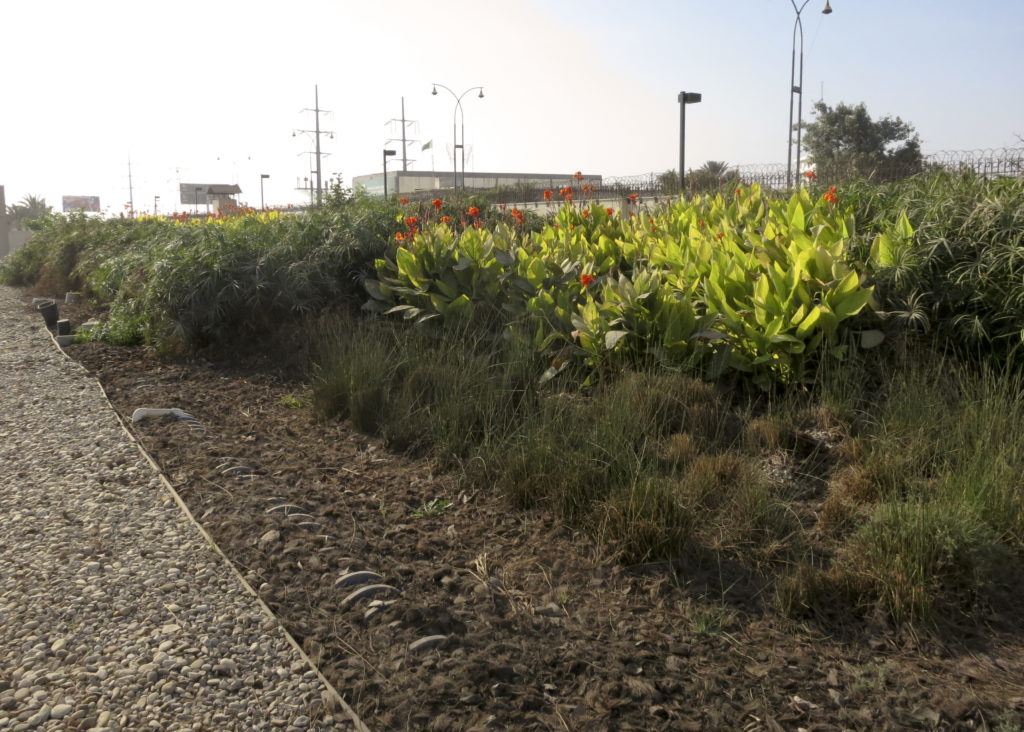
Image Source: Bureau of Overseas Buildings Operations
Sustainable site features include permeable gravel for rainwater absorption, constructed wetlands for on-site biofiltration, native plant species to reduce irrigation requirements, and efficient exterior lighting that minimizes light pollution and conserves energy.
Overview
By 2050, it is expected that 70% of the world’s population may be living in urban communites.1 This increasing global urbanization may continue to have environmental and social impacts beyond the city limits, but the extent of those impacts is difficult to predict. Cities and towns create external demands for food, water, power, transportation, and waste disposal.2 Burdens placed on local and global ecosystems by urban demands can include elevated air temperatures; air, soil, and water pollution; increased incidence of disease and chronic health conditions; loss of animal and plant species; and higher levels of atmospheric carbon.
Site grounds that respect the natural ecosystems, enhance biodiversity, and incorporate technological innovations can demonstrate leadership in wise use of resources, providing tangible examples of sustainable performance. This is especially important in developing countries that may be struggling to balance natural resource management with economic growth.
Sites that maintain a healthy, functional, and preserved ecosystem help protect water resources, control erosion, regulate pests and disease, provide nutrient storage and recycling, assist in pollution breakdown and absorption, contribute to climate stability, increase habitats, decrease building energy use, and increase resilience to natural disasters.
Integration of native and adapted species, low-impact development, and stormwater management into the landscape design of diplomatic sites offers a highly visible opportunity for the mission to demonstrate best practices in sustainability.
Figure 1: Air temperature variation by land use type

Image Source: U.S. Environmental Protection Agency
Evidence of heat island effect is another compelling reason to preserve the natural landscape of diplomatic sites. The concentration of heat-absorbing surfaces within urban areas, such as asphalt paving or darkly colored roof areas, produces higher temperatures than surrounding suburban and rural areas (Figure 1).3 Resultant increases in local temperatures have negative environmental and health impacts.

